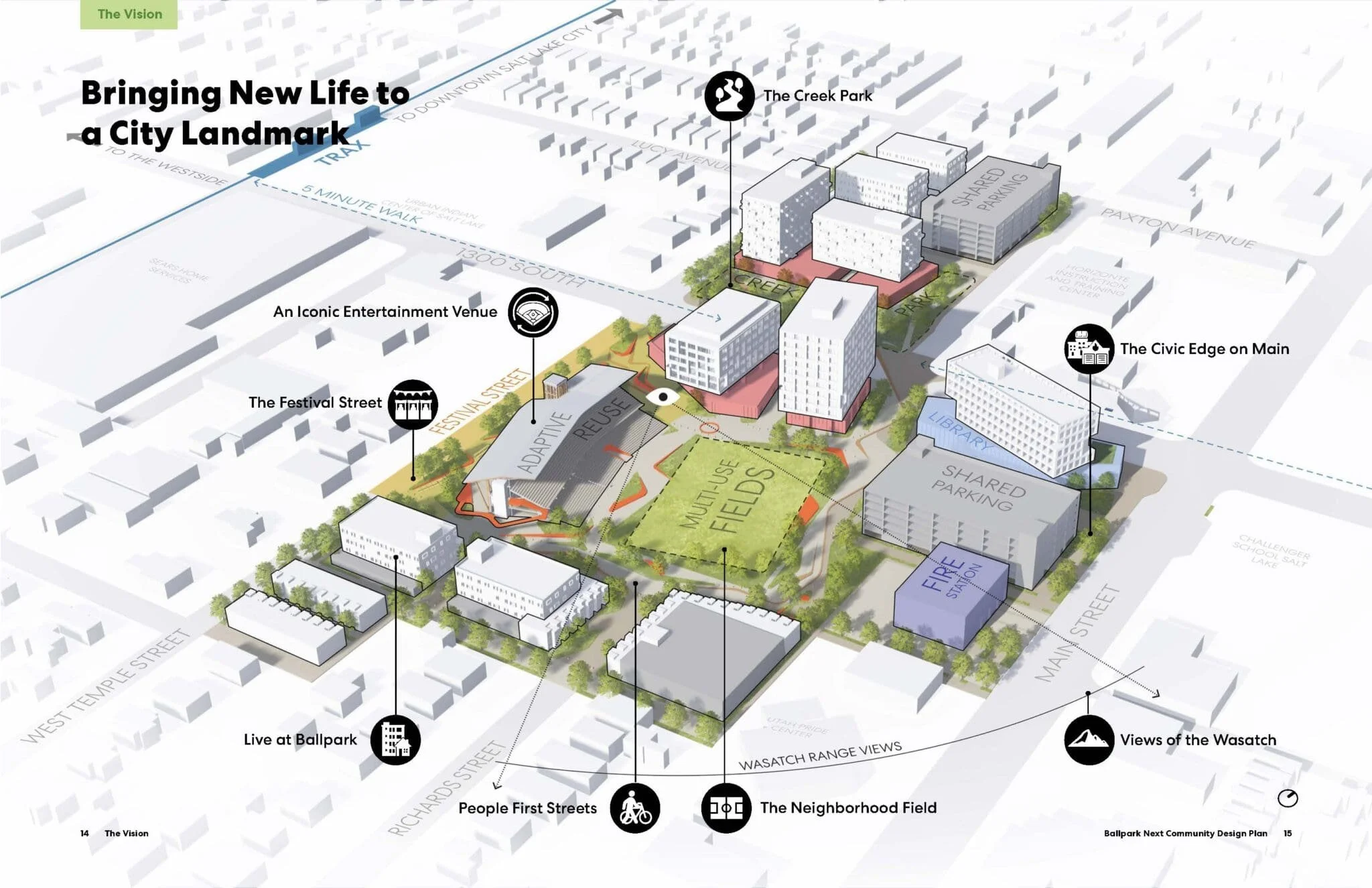Local group wants to reintroduce city creeks
Authored by Isaac Riddle
Source: Build Salt Lake
This article highlights the Three Creek Confluence and the daylighting of Red Butte, Emigration, and Parleys Creeks there. Efforts address environmental injustices on the west-side of Salt Lake City.
Salt Lake City has just over 17 percent of the countywide population, but the city has four of the seven largest creeks that flow through the county. For city resident, Brian Tonetti, the fact that these creeks are covered once they enter the city represents a lost opportunity.
Tonetti is a founding member and the Executive Director of the Seven Canyons Trust, a nonprofit organization dedicated to daylighting (freeing buried rivers and streams) and restoring Salt Lake Valley’s seven largest creeks: City, Red Butte, Emigration, Parleys, Mill, Big Cottonwood and Little Cottonwood. All but Mill, Big Cottonwood and Little Cottonwood Creeks flow through Salt Lake City.
The organization’s first project will be daylighting the Three Creeks Confluence near 1300 South and 900 West in the Glendale neighborhood of Salt Lake City. The site is the confluence of Emigration, Parleys and Red Butte Creeks with the Jordan River. The organization is collaborating with the city’s Open Space Lands Program on the Three Creeks Confluence of Jordan River Reactivation & Riparian Restoration Project. The site is currently a dead end and will include the daylighting of the confluence at the east bank of the Jordan River near 900 West, a kayak/canoe resting area, pedestrian trails and landscape enhancements along the Jordan River.
Seven Canyons Trust started in 2014 as an offshoot of an Urban Ecology and Planning Workshop at the University of Utah department of City and Metropolitan Planning taught by Stephen Goldsmith, former city planning director. The class created a vision document which evolved into the 100 Years of Daylighting plan, a 2014 Utah American Planning Association award winner for Outstanding Achievement. The 100 Years plan seeks to daylight the 21 miles of buried creeks in the Salt Lake Valley by 2114.
For Tonetti, Seven Canyon’s focus is that of environmental justice. Many of the creeks were buried a century ago in an attempt to protect the water supply and prevent accidental drownings. Because how the city uses and treat water has changed in the last 100 years, Tonetti feels it’s time to uncover the city’s creeks.
“We capture our drinking water at the point of the mountains, by the time they (the creeks) enter the valley it is no longer drinking water,” said Tonetti.
All seven creeks flow into the Jordan River. Tonetti cited the recent toxic algae bloom in Utah Lake, the source of the Jordan River, as a reason to daylight creeks along the Wasatch Front. The algae bloom sickened dozens of people and resulted in the temporary closing the lake in June.
Unlike the pipes that carry buried creeks to the Jordan River and Utah Lake, the vegetation and soil that accompany daylighted creeks absorb many of the pollutants that helped create the Utah Lake bloom.
“Daylighting starts with community support,” said Tonetti.
The organization, in collaboration with the Jordan River Commission, hosted the Three Creeks Confluence Community Celebration at 1300 S 800 W in Glendale. The event encouraged participants to provide input on a chalkboard public-art piece and Jane Jacobs-inspired Seven Creeks Walk Series. The event also included some tactical urbanism by painting directly over the buried creek flows near 1300 South.
Because the city’s creek mostly flow east to west, Tonetti sees daylighting as an opportunity to provide better east to west connections in the city.
Seven Canyons plans to continue reaching out to residents through temporary installations and organized walks to get residents to reimagine daylighted creeks in the city and get involved in the process. The organization is also reaching out to developers to get them interested in daylighting creeks that pass through their developments. According to Tonetti, the best time to daylight creeks is in the early building stages of a project when site disturbance is already underway.
“Now we just need the developers to think about this stuff; it is win-win and it would help them as another amenity they can offer their tenants,” said Tonetti.
Construction has yet to start on the Three Creeks Confluence. The city held three workshops this summer and earlier this year the Salt Lake City Council approved funds to build the project’s initial infrastructure.




